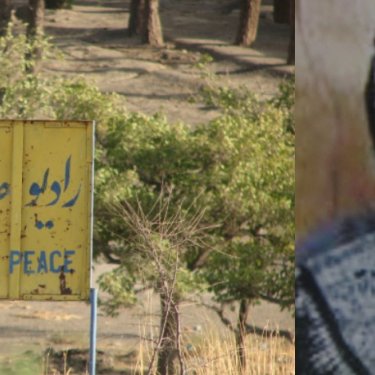Unpunished murder encourages more violence against woman journalists

Reporters Without Borders (RSF) calls for a new, in-depth and impartial investigation into the murder 11 years ago today of Zakia Zaki, an Afghan woman journalist who ran Sada-e-Solh (Voice of Peace), a radio station in Jabal al-Sirāj, 85 km north of Kabul in Parwan province. Her killers have yet to be publicly identified and brought to justice.
“The 11 years of impunity for those responsible for Zakia Zaki’s death have been 11 years of encouragement for violence against women journalists,” said Reza Moini, the head of RSF’s Iran-Afghanistan desk.
“Although Afghanistan’s national unity government has taken encouraging measures to defend the freedom to inform, above all the creation of coordinating committees for the safety of journalists and media, her death has never been properly investigated. RSF also asks the authorities to explain how the case file disappeared and why the perpetrators and instigators of her murder continue to enjoy impunity.”
Zaki and her team, who started Sada-e-Solh before the Taliban were expelled from Kabul in 2001, had often been threatened by local warlords prior to her murder by gunmen who entered her home on the night of 5 June 2007 and shot her seven times in front of her two-year-old son.
Contradictory statements, missing case file
Abdul Manan Farahi, the head of the interior ministry’s anti-terrorism department, announced on 7 June 2007, within hours of her murder, that six suspects had been arrested and that two of them, linked to Hezb-e-Islami (a militant Islamist group founded and led by Gulbadin Hekmatyar), were the ones who shot her. But all of them were released a year later.
According to the information that RSF recently obtained and to the coordinating committees for the safety of journalists and media, the Parwan prosecutor’s office confirmed that it arrested two people the day after Zaki’s murder but provided no details. Since then, nothing has been reported about the case being pursued any further, and the security services have yet to conduct any serious investigation.
In a March 2014 report on press freedom and impunity in Afghanistan, RSF said the murderers were believed to be followers of Hekmatyar and that the leading suspect, the head of the commando that carried out the murder, had been killed a year later by foreign forces.
“He was one of the assailants who attacked a military base in the region,” a senior police office told RSF at the time. “The government knew full well that he was one of the local Hezb-e-Islami leaders but did not know he was involved in Zakia Zaki’s death. We determined that when we found his gun on him. It was the gun that was used to kill the journalist. As for the other two assailants, one is in prison for other crimes and the third is also apparently in prison.”
Since Zaki’s murder, dozens of women journalists have threatened, attacked or reduced to silence. Many of them have been forced to abandon their media jobs because of the growing threats and the dangerous climate for women working in the media.
Survey of women in the media
The findings of the first-ever survey of women journalists and media workers in Afghanistan was unveiled by the Centre for the Protection of Afghan Women Journalists (CPAWJ), an RSF local partner, at a press conference on 10 March.
To carry out the survey, the CPAWJ interviewed 324 national and local media outlets in 32 provinces: 83 TV stations (including three cable networks), 159 radio stations, four news agencies and 78 print media (including 19 daily newspapers), as well as four NGOS that defend journalists and the freedom to inform.
The CPAWJ found a total of 1,741 women working in these media, of whom 764 are professional journalists. Kabul, Herat and Balkh are the provinces with the most women journalists. Khost and Wardak have none. The survey confirmed that the decline in the security situation in Afghanistan has had a direct impact on the presence of women journalists in the media.
Afghanistan is ranked 118th out of 180 countries in RSF's 2018 World Press Freedom Index.



